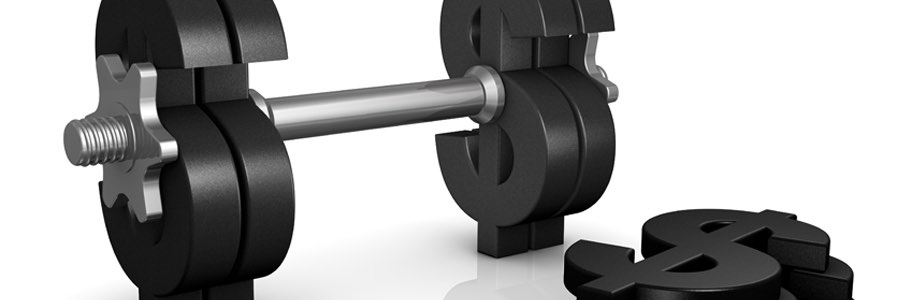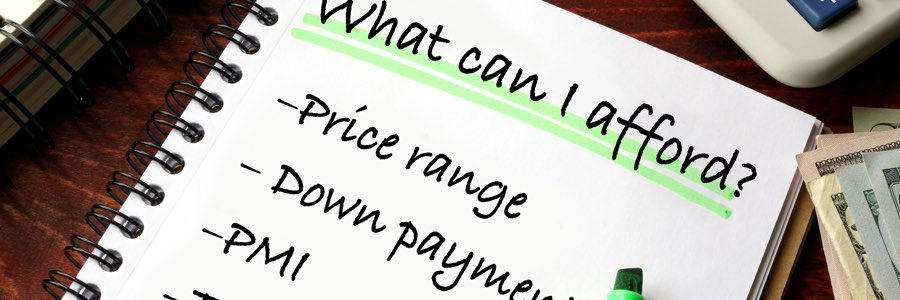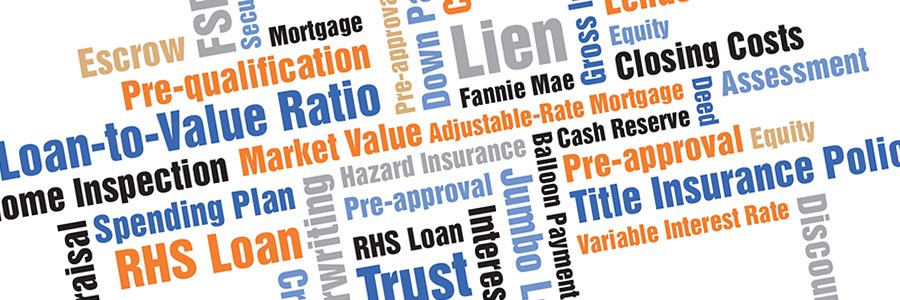TRAINING FOR HOME OWNERSHIP
A place of your own…be it apartment, condo, colonial or cottage, finding your perfect home will depend not only on your wallet, but on your heart and head as well.

YOUR FIRST HOME
Taking that step from renter to owner is one of life’s greatest achievements…and one of its scariest. Finding the right property is the easy part. Preparing for ownership, both financially and mentally, is critical to your smooth journey home. Over 60% of Americans own a home – nearly twice as many as those who rent, according to a recent Gallup poll. Are you ready to join them? Understanding the process of buying and financing a home is the key to opening your own front door.

RENT vs BUY
Homeownership has always been the American dream. We’ve been taught that it builds equity, whereas rent money is ‘thrown away’ every month. Yet more Americans are choosing to rent rather than buy a home. According to a Harvard University study, over 35% of households are renters, the highest percentage since the mid-60s. Their rationale: they have better quality of life, as opposed to scraping up huge down payments and large monthly payments for a home that’s not necessarily as nice as the place they rent.
So which is the better financial choice? That’s tough to answer. Some experts suggest that renters who invest the money they would have spent on a down payment might potentially realize gains that surpass a home’s appreciation in value. Others claim that as a homeowner, you increase personal wealth as you pay off your principal and build equity that historically surpasses stock market gains.
Bottom line: both have their advantages, so it’s a personal decision, as well as a financial one. Here are some points to consider:
Renting
- You know exactly what your housing costs will be
- You may have more cash on hand each month
- Maintenance and repairs are the landlord’s responsibility, not yours
- It’s easy to relocate
Owning
- You can put down roots
- You’re protected from rising rents (or from having the place sold out from under you)
- You’re building equity
- Your home’s appreciation can help fund retirement or be a legacy for the kids
- You can decorate, extend, and upgrade pretty much to your heart’s content
Another advantage of buying: as you pay off your mortgage, at some point it will become cheaper to own a home than to rent one. And one day, you can live ‘rent-free’ (‘mortgage payment-free’ that is.) That’s called your ‘breakeven horizon.’ When will that happen for you? This Rent-Vs-Buy Calculator can help you find out.

GETTING FINANCIALLY FIT
Rule #1: order before offer. Put yourself and your finances into prime condition before you begin the purchase process. You will be asking to borrow hundreds of thousands of dollars. And your lender wants to make sure you’re someone they can trust to pay back that loan. They look for prospects with:
• a solid history of on-time payments
• a good variety of accounts (such as a car loan plus credit cards)
• not too much debt relative to your income
Here are some steps to ensure your creditworthiness:
1. Check your credit report at least one year before your start the home search. Order copies of your free annual credit report HERE or HERE. Be sure everything is in order, and make any necessary corrections.
2. Know your credit score. This will help you determine the interest rate you qualify for. The best (lowest) mortgage interest rates usually go to buyers whose scores are 700 – 770. Buyers with lower scores can expect to pay higher interest on their loans. That can add up to significantly higher payments. For instance, let’s take the monthly payment (principal and interest) on a 30-year fixed rate mortgage of $200,000:
• at 4% interest, your payment would be $954.83
• at 5% interest, your payment would be $1073.64
You’d be paying $118.81 more per month. That adds up to $1,425.72 per year, and a whopping $42,771.60 additional over the life of your mortgage loan.
3. Take the time to fix your credit. Not only can you save thousands in mortgage interest payments, your low credit rating impacts your down payment requirements too. For instance, the Federal Housing Authority (FHA) requires 10% down payment for borrowers with scores below 580; those above need only put 3.5% down.
4. Don’t open any new credit, unless it’s absolutely necessary (college tuition or a car.) Opening a lot of new accounts is a red flag to lenders, because it increases your ability to incur more debt. And that can lower your credit score.
5. Track your income/expenses. You need a very clear picture of your cash flow in order to determine how much expense you can comfortably handle. Keep a careful record of your finances for at least 6 months before beginning your home search. Online templates such as this one can help you keep track.
6. Think twice before switching jobs. Lenders will look into your employment history. They’re looking for stability. A major change in pay structure (such as going from salary to commission), and a change in position can impede your loan approval. Ask your mortgage lender if/how a job change might affect you.

WHAT CAN YOU AFFORD?
The desire to buy a home may be personal, but the ability to buy one is definitely financial. This is probably the single largest purchase you will make. You will need a lump sum for a down payment, cash flow for monthly mortgage payments, emergency savings for unplanned repairs and maintenance, plus insurance. Consider these factors when determining your affordability level:
Price range – It’s generally assumed that buyers can afford to handle a property that costs 2 to 2.5 times their gross income. If your annual salary is $100,000, you can probably afford a mortgage of between $200,000 and $250,000. But remember, that’s not the only financial factor you need to consider.
Down payment – This is the money you must pay upfront, which helps lenders know you’re a good bet for their mortgage loan. The amount of your down payment can vary, depending on your lender’s requirements. Rule of thumb: 20% or more down usually ensures you get the best interest rate on your mortgage loan. But some programs accept as little as 3% down.
PMI – When buyers have less than 20% down payment, lenders require private mortgage insurance. This protects them from losing their money should the borrower foreclose. Depending on your credit score and the amount of your down payment, a PMI policy can cost between 0.5% to 1.0% of your loan amount each year. For example, if you have a $200,000 mortgage, and PMI rate of 0.5%, your policy would cost $1000 year, and your monthly premium would be $83.33.
Tax – You’ll be paying property tax on your home. This may be added to your monthly mortgage payment. Remember: property taxes usually rise over the years (but hopefully so will your income.)
Other costs – You will incur closing costs, including legal fees, title search, document preparation, appraisals. You should expect your closing costs to be about 2-5% of your total purchase price. You will want a homeowner’s insurance policy. There may also be homeowner association fees or condo maintenance fees on the property you’re considering. And don’t forget moving vans, painters, blinds, lawn mowers. Not to mention heat, electric, and water bills.
How much house can you afford? Use this calculator for a general estimate.

HOMEBUYING TIMELINE
You’ve checked your credit report and put your finances in order. You know your price range. You’re building up a down payment. Time to take your home search to the next level. This checklist from House Logic will help:
One year before
- Decide what you really want in a new home. Large yard? Close to transportation? Stellar schools? City, country, house or condo? Once you prioritize your ‘wants,’ make an equally important list: what are you willing to do without in order to get some of the features you really want.
- Visit neighborhoods and start going to open houses. Take advantage of the many online home-listing sites (Zillow.com, realtor.com, mls.com). Seeing actual properties and communities in your price range will help you know when a home is well-priced, and will give you negotiating chops.
6 months
Start collecting the paperwork you’ll need for the loan application. Requirements vary from lender to lender but you can expect to be asked to provide a lot, including:
- W-2 forms
- personal and business tax returns (two or three years’ worth)
- recent pay stubs
- bank account, loan and credit card statements
- investment account and retirement account statements
- your addresses for the last five to seven years
Shop for your sales team – start with a Realtor. Recommendations are always good. Looking online and simply interviewing agents can help you make connections too. You may want to consider a buyer’s agent, who works on your behalf, helping negotiate with the seller’s agent, and supporting you through the closing process. It’s also time to find a financing source, such as a mortgage broker, who can shop for the best loan options among many lenders, as opposed to a bank, which offers only its own products.
3 months
- Get loan pre-approval. Based on all your paperwork, the lender you’ve chosen will tell you the loan amount that you will be eligible for. (Remember: this is the maximum mortgage amount, and borrowing less may make more sense for you.)
- Start shopping! With pre-approval your agent can target properties in your price range. And sellers will listen to your offer, because they know you’re a serious prospect.
2 months
- Make your offer. A contract will be drawn, and you will close on the home at least four to six weeks after that. Factor that timeframe into your search, so you can smoothly transition from one home to the next without the hassle and expense of putting everything into storage and living with the in-laws.
- Order a home inspection as soon as your offer has been accepted. If something needs repair, it could delay closing.
The last month
- Double-check your financial paperwork, and have your realtor walk you through the mortgage documents.
- Get a homeowners insurance policy. You’ll need to bring proof of insurance to closing.
- Do your final walkthrough a day or two before you close. Make sure everything is as you and the seller agreed.
- Get a cashier’s check in the exact amount you will need for your down payment and closing costs. You will be told that number a few days ahead. Personal checks will not be accepted, so be sure you either bring a cashier’s check or have the money wired.

GETTING APPROVED
Here’s the mortgage process in a nutshell: Lenders approve your loan, and the property you are buying becomes collateral or security. If you do not pay back the loan, the lender will take back the property. This is not something they really want to do. In fact, they’d greatly prefer that you make your payments with no fuss or trouble, and pay off the loan as hoped. In order to achieve this, they are careful to approve only those who they feel can comfortably handle the debt. Here are some factors they look for:
Debt-to-income (DTI) ratio – This measures your income as compared to your monthly debt and liabilities. The lower your DTI ratio (the greater your income vs what you owe) the better you’ll be able to handle monthly mortgage payments. So the more sure the lender is that you’re a good bet. Rule of thumb: to qualify for a mortgage, you must have a DTI that’s no higher than 43%. A DTI of 36% or less is preferred. You can lower your DTI in two ways: increase your income, or reduce your monthly debt.
Loan-to-value (LTV) – This measures the difference between the property’s value and the loan amount you are requesting. When the requested loan amount is near (or at) the appraised value, it has a high LTV. Lenders consider that the higher the LTV the greater the chance for loan default because very little equity can be built in the property. So while you may be approved for a mortgage with an LTV of 95%, you’ll be paying an interest rate that’s as much as 1% higher than a mortgage with a 75% LTV. In addition, you’ll be required to pay private mortgage insurance until the LTV drops to 80%.
Your credit – Lenders like a 24 month look-back on your credit scores and history. See the “Getting Financially Fit” section for ways to look your creditworthy best.

WHICH MORTGAGE FOR YOU?
You’ll not only be living in your home for many years to come, you’ll be living with your home financing. It’s essential to find a mortgage that’s the best fit for you. With so many programs available, it can seem like a daunting task. But understanding your choices can make a big difference in your finances and your life. Here’s a quick overview of some common programs:
Fixed rate mortgage – is a loan whose interest rate stays the same over the entire term. It’s a great choice when rates are lower, and for buyers who want the security of knowing exactly what their monthly payment will be. Typically the repayment term is 30 years, though 15, 20 and 10 year loans are also available. The shorter the term the larger the monthly payment, but the lower the interest rate and overall cost. What’s the difference in your out-of-pocket over the life of a 15 year loan as compared to a 30 year loan? See for yourself HERE.
Adjustable-rate mortgage – is a loan whose interest rate will change at predetermined times according to market conditions. Initial rates are usually lower than fixed-rates, so monthly payments are lower too. After the initial period (6 months, 1-, 3- or 5-year, depending on your loan) the interest rates will change, going up or down, depending on the market index. Most ARMs have a ‘cap’ or limit on how high the interest rate can go, and how often the rate can be changed. ARMs may be a good choice for buyers who expect their income to increase over time, to keep up with potentially larger monthly payments. Use this calculator to approximate what your ARM payments might be.
Jumbo interest-only loan – is specifically for wealthy buyers who are borrowing at least $625,500. The first five, seven or 10 years require payments of interest-only. After that, the borrower pays principal and interest, and the rates usually change annually. This is considered a ‘non-conforming’ loan, because it is considered more risky for the lender than conventional mortgages.
Conforming loans – these mortgages meet guidelines set by the Federal Housing Finance Agency (Fannie Mae and Freddie Mac). Maximum loan amounts change each year. In 2017 the limit was $424,100. But there are adjustments available for buyers in high-cost real estate markets. Conforming loans have better interest rates than non-conforming loans, such as those for buyers with poor credit, bankruptcy, or high DTI income.
Government-insured loans – These mortgages differ from “conventional” loans because they are insured or guaranteed by the federal government. The most common programs are:
- FHA loans – from the Federal Housing Administration, under the Department of Housing and Urban Development. Anyone can apply for an FHA loan (not just first-time buyers). The federal government insures the lender against any loss that might occur if the borrower defaults on the loan. Down payment requirements are as low as 3.5%, though borrowers will pay PMI.
- VA loans – military service members and their families may apply for this financing, through the US Department of Veterans Affairs. Again, the lender is guaranteed to be paid back should the borrower default. And borrowers may receive 100% financing, so they can buy a home with nothing down.
- USDA loans – are specifically for homebuyers living in rural areas. The government finances 100% of the mortgage (no down payment required), and often interest rates are discounted.
Bridge loans – are for homeowners who are buying a home before selling their current one. They’re also called ‘gap’ loans or ‘repeat financing,’ because they wrap your existing payment plus your new payment into one. When you sell the old home, you pay off that mortgage and refinance. This option is good for buyers with strong credit and low DTI ratios, who will be financing less than 80% of the two homes’ combined values.

CREATIVE DOWN PAYMENT FUNDING
It’s not news that the hardest part of buying a home can be coming up with the money for a down payment. But you might be surprised to learn that there are assistance programs out there that can reduce your requirements – or make them disappear entirely! There are over 2,000 down payment programs in the US, and the average amount of down payment assistance is about $11,500, according to an article in Realtor.com.
Start online, with sites such as HERE and HERE. The US Department of Housing and Urban Development (HUD) offers a variety of programs that assist with down payment and closing costs. HUD also has a link that connects to your state’s programs.
Try crowdsourcing. Getting married? Expecting a child? Skip the requests for coffeemakers, china or cribs. Register for cash instead! Many couples are turning to sites like Feather The Nest and Hatch My House and requesting donations instead of shower and wedding gifts. Once you register and create your profile page, simply get the word out to family and friends, and they can donate directly on your page.
Look at work. Many companies have Employer Assisted Housing programs providing interest-free loans for down payments. These loans, which are for low- to moderate-income employees, can be repaid over 10 years.
Ask your folks. Gifts are frequently used for down payments. Just be sure you know your lender’s rules on getting outside help. The FHA, for example, allows gift funds only from immediately family members, and you must have a document from the giver declaring that the money is not a loan.
Request seller concessions. Your seller may be willing to help, in order to close the deal.
Sell something valuable. Got an heirloom ring you never wear? How about trading your classy coupe for a clunker and tucking the proceeds into your down payment savings account. You may also want to consider a part-time job until you’ve amassed your funds.

TAPPING YOUR HOME’S EQUITY
The family home is not just your nest – it can also be your nest egg. All those monthly payments you faithfully make have been chipping away at the amount you owe on your mortgage loan. And hopefully property values have gone up too. Result? Your home’s equity (its current appraised value minus the amount you still owe) has grown. And about 80% of those funds are available for you to borrow, at lower interest rates than conventional loans and credit cards.
There are two ways to access those funds: a home equity line of credit (HELOC), and a home equity loan. Both use your home as collateral, much as your primary mortgage loan does. They generally have a shorter payback period. And if the debt is not repaid, you risk losing your home. Here’s how they work:
Home equity loan – a one-time loan that’s given to you in a single lump sum. It has a fixed interest rate, so your payments remain the same throughout the life of the loan. The repayment period begins when the loan is delivered, and once you get the money you can’t borrow any more from that loan.
Home equity line of credit – think of this as a checkbook or credit card. You are given a maximum credit amount, and a withdrawal period, usually 5–10 years, followed by a repayment term of 10-15 years. During the draw period, you can borrow however much of your credit line you choose whenever you choose. If your HELOC line is $50,000 but you only end up needing 35,000, that’s all you take out. You are required to make interest-only payments during the withdrawal period, though if you choose to pay principal too, the amount you pay back is added back to your available credit. Once the draw time expires, you can no longer borrow from your line, and you begin to repay principal as well as interest, on the money you owe.
Computing your equity – Say your home’s current appraised value is $250,000. You still owe $150,000 on your mortgage. Your home’s equity is $100,000 ($250,000 – $150,000). Your home equity loan or line of credit would be $80,000 (80% of the equity amount).
Caveats to consider – Using your greatest asset as collateral for another loan can help you access quite a large amount of money, at very favorable interest rates. But before you dive in, here are some need-to-know’s:
- You will be paying for two ‘mortgages’ for a significant number of years to come. Do not consider credit loans if your income is likely to shrink.
- HELOCs have variable interest rates, so your payments may go up. Make sure your line has a cap (maximum limit interest rates can increase.)
- If home values are dropping in your area the lender may freeze your line of credit.
- If you sell your home you must pay off your primary mortgage and your home equity loan. That can substantially shrink the amount of cash you end up with.
- HELOCs and home equity loans have upfront costs, including application fees, attorneys, appraisals, etc. If you’re not planning to borrow much money a credit line may not be your smartest choice.
- Interest-only payments can come back to haunt you, with much higher payments later on. Be sure you’re financially ready to handle them.

HOMEBUYING GLOSSARY
As you navigate the purchase and financing processes, this list of common terms, compiled by the Mortgage Bankers Association, will come in handy: Download Here
